5 Best Floating Pond Plants (Plus Free Plant Care Cards)
Pond Academy is reader-supported. Buying through links on our site may earn us an affiliate commission. As an Amazon Associate I earn from qualifying purchases.
Floating pond plants are great for adding visual appeal to your pond, adding vital oxygen to the water, and preventing algae growth, amongst other benefits.
But, with many floating plant species, if left unchecked, it can actually be detrimental, as their rapid growth can choke out other pond plants and overtake your pond.
So, let's look at 5 of the best floating pond plants, plus how to properly plant and care for each!
Floating Pond Plants Comparison Chart
| Description | Type | Price | ||
|---|---|---|---|---|

|
Floating Heart | Floating Plant | ||

|
Frogbit | Floating Plant | ||

|
Lily Pads | Floating Plant | ||
|
|
Water Hyacinth | Floating Plant | ||

|
Water Lettuce | Floating Plant |
*Buying through links in this chart may earn us a commission at no additional cost to you.
Get Our Best Pond Tips Sent to Your Inbox for Free!
Join thousands of others and learn from our decades of pond building and maintenance experience! Your pond will thank you!
By subscribing you agree to receive emails from PondAcademy.com. We will always respect your privacy and you can unsubscribe at any time.
Best Floating Pond Plants
The best floating pond plants help oxygenate pond water, consume excess nutrients, provide shade for fish, and are easy to care for. Examples include Floating Heart, Frogbit, Lily Pads, Water hyacinth, and Water Lettuce.
Many floating pond plants fit the criteria above, so often, the “best” plant simply comes down to the one that’s most visually appealing to you.
With that said, let's take a closer look at five of our favorite floating pond plants and find the best one(s) for you and your pond!
![]() IMPORTANT
IMPORTANT
Some species of plants might be considered invasive or illegal where you live. Always check with local regulations before adding plants to your pond.
Floating Heart (Nymphoides Peltata)
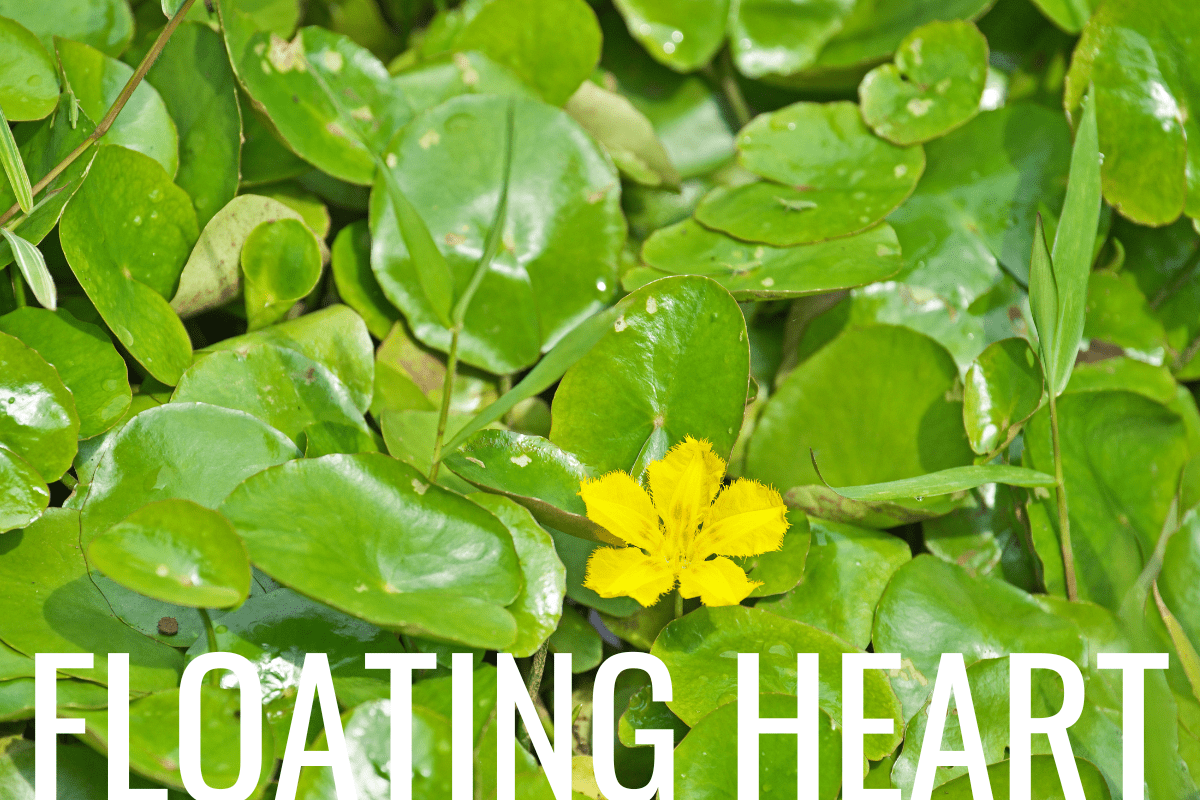
The Floating Heart Plant is an aquatic flowering plant that, due to its appearance, is often mistaken for the water lily.
This perennial plant features submerged roots and floating heart-shaped leaves typically 2 - 4 inches in diameter but have been known to get bigger in the right conditions. During the bloom season, the Floating Heart plant will grow bright white or yellow flowers on long stalks.
The plant absorbs nutrients from the water through its submerged root system, helping to keep your pond water clean and clear.
It’s important to keep your Floating Heart plants in check, as they can quickly form large colonies that blanket the surface of your pond. This can choke out any other pond plants you might have and diminish the aesthetic value and water quality of your pond.
![]() Floating Heart Quick Facts
Floating Heart Quick Facts
This floating pond plant should be planted in an area that receives full to partial sun. It is hardy in USDA Zone 5 - 10. The Floating Heart plant can grow up to 3+ feet while the flowers will typically grow 3 to 6 inches and typically blooms early May through September with yellow flowers.
Floating Heart Planting Tips
- For best results, plant Floating Heart runners in a sandy/soil mix substrate, preferably in a pot, and submerge into your pond up to two feet. You can plant directly in loamy soil in your pond, but this species can quickly take over your pond by spreading via rhizomes which will make it difficult to control.
Check out our full guide on how to plant floating heart in a pond, properly care for it, and much more!
Floating Heart Plant Care Card
Click the Floating Heart care card below and save the PDF to your computer or phone. Print the 3x5 card or access it right from your mobile device - anytime, anywhere. It's 100% free!
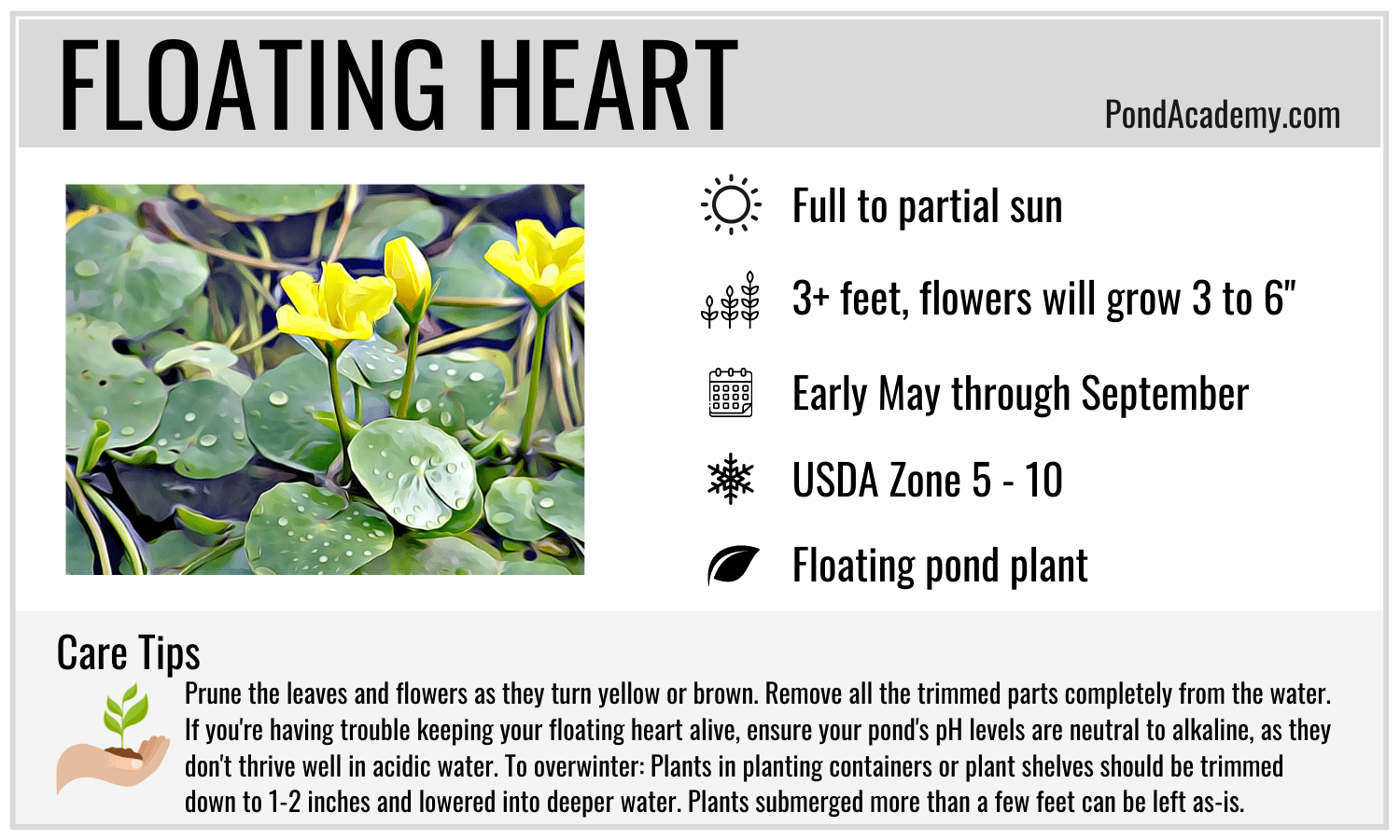
Frogbit (Limnobium laevigatum)
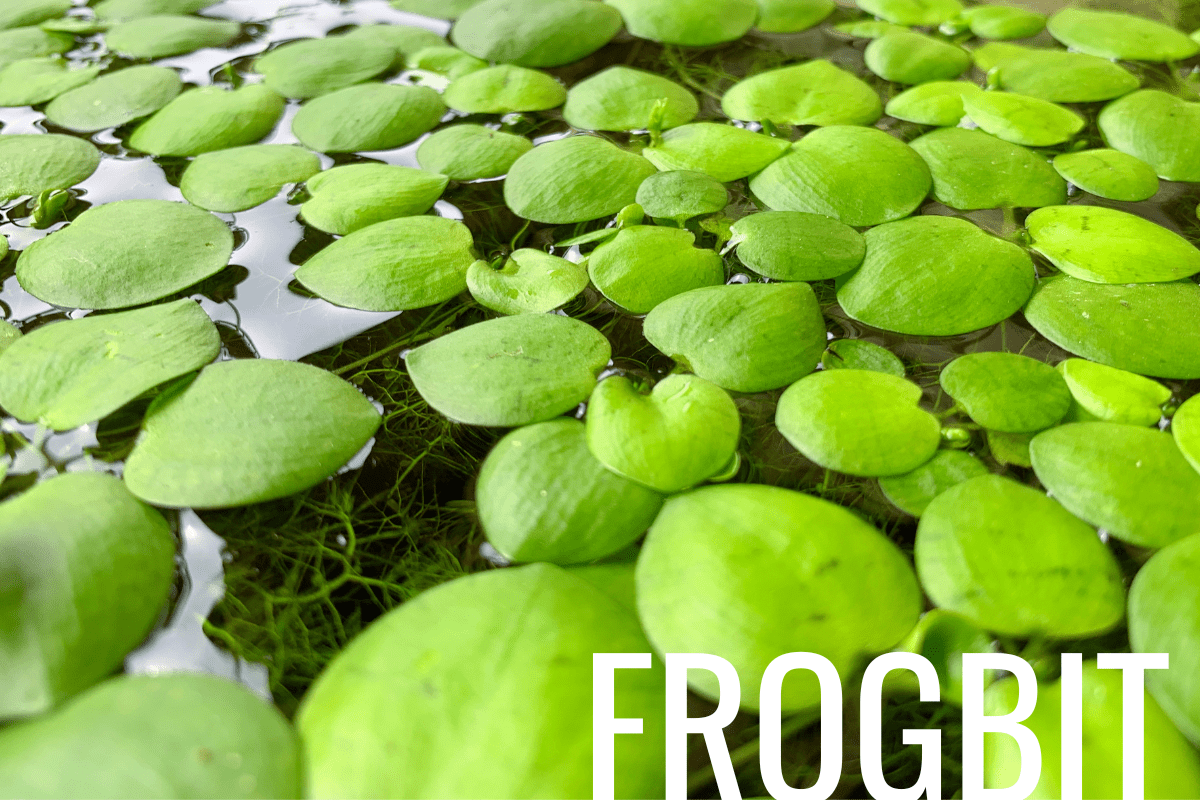
Frogbit is an aquatic plant well-known for its green, fleshy, heart-shaped leaves, similar to a miniature water lily. It has beautiful, small white flowers that bloom in summer.
Frogbit can be used as shade from the sun (to inhibit algae growth) or as protection for your pond fish from predators. The many roots also make it suitable for added filtration.
It is important to note, however, that Frogbit is classified as an invasive species in some states, so you may have to check local regulations before planting. You should always keep the plants away from public lakes or waterways in any state.
![]() Frogbit Quick Facts
Frogbit Quick Facts
This floating pond plant should be planted in an area that receives full sun to partial shade. It is hardy in USDA Zones 4-10. The Frogbit plant can grow up to 20 inches long with leaves up to 2.5 inches wide and typically blooms in Summer with white flowers.
Frogbit Planting Tips
- You can plant the Frogbit directly on the surface of your pond or aquarium. Simply drop the plant gently onto the water's surface, with the roots pointing down towards the bottom of the water.
- The plant will either continue to be free-floating or take root if a substrate is present.
Check out our full guide on how to plant frogbit in a pond, properly care for it, and much more!
Frogbit Plant Care Card
Click the Frogbit care card below and save the PDF to your computer or phone. Print the 3x5 card or access it right from your mobile device - anytime, anywhere. It's 100% free!
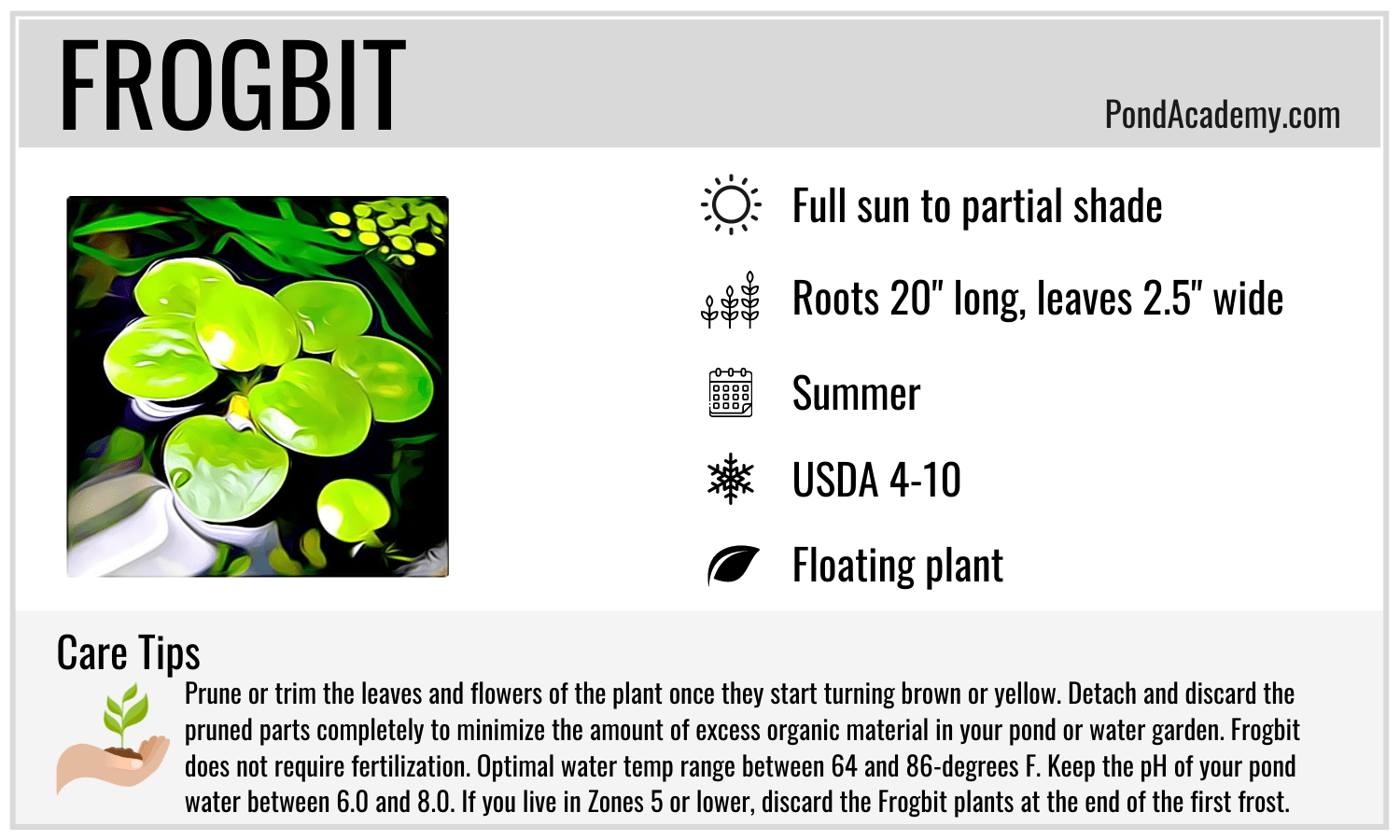
Lily Pads (Nymphaea)
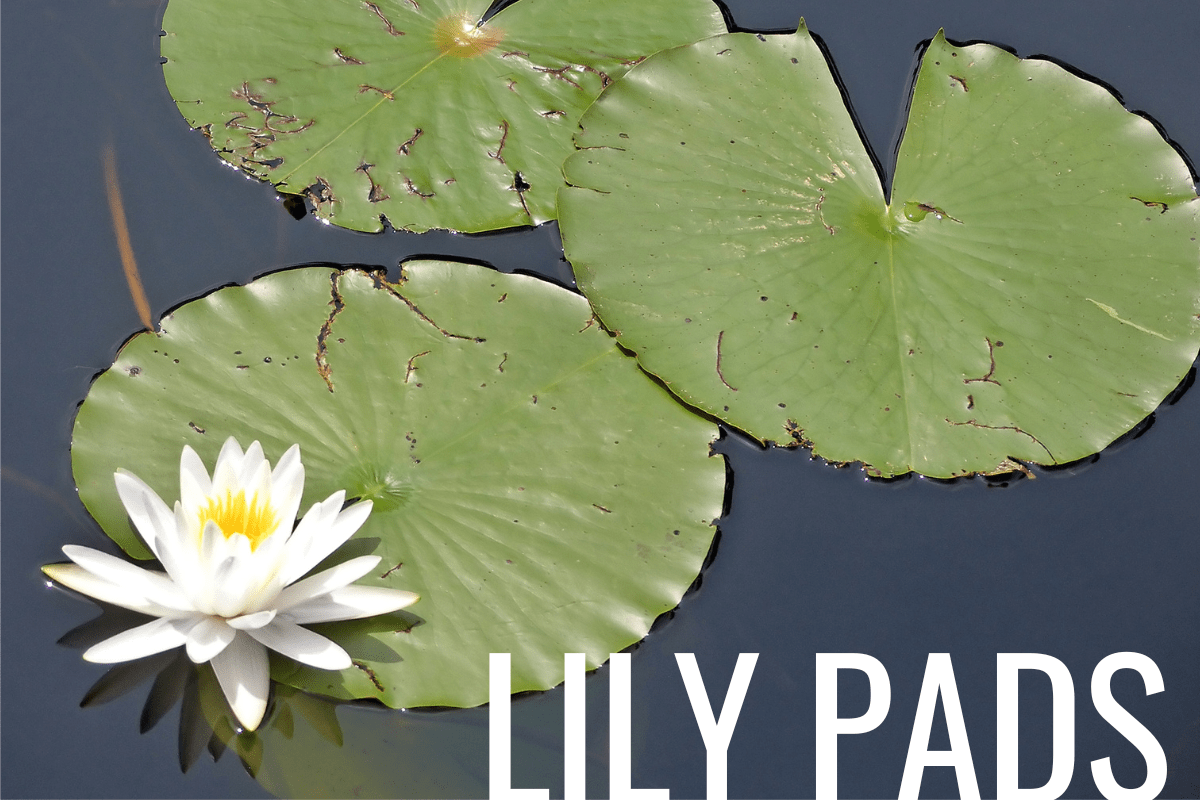
If you're serious about making your pond more pleasing to the eyes, then hardy Water Lilies are the perfect addition!
Aside from the great aesthetic values of the colorful flowers and floating green pads, planting water lilies can also keep your pond healthy. Pond fish and other wildlife stay sheltered under the shade of the plants, and they block out sunlight that fuels algae growth helping to keep pond water clean and clear.
![]() Lily Pads Quick Facts
Lily Pads Quick Facts
This floating pond plant should be planted in an area that receives full sun to partial sun. It is hardy in USDA Zones 4-11. The Lily Pads plant can grow up to a variety of sizes and typically blooms Spring to Frost with orange, pink, red, white, yellow, purple, or blue flowers.
Lily Pads Planting Tips
- Start by filling the planting pot with clay-based planting material and clay/soil mix – 2 inches each.
- Introduce a 3-4 inch layer of aquatic planting media on top.
- The tuber is best planted in a horizontal position, such that you have the base root end positioned near the tub wall, while the growing tip is pointing upwards and towards the center. When placing the tuber into the soil, ensure that the depth is just enough to anchor the tuber while keeping the growing tip above the planting media.
- You may place a light layer of rock or gravel on top of the planting media (this is optional).
- Finally, transfer the planting container into your pond or water garden, with the water surface level at 3-6 inches above the stem’s growing tip.
Check out our full guide on how to plant lily pads in a pond, properly care for it, and much more!
Lily Pads Plant Care Card
Click the Lily Pads care card below and save the PDF to your computer or phone. Print the 3x5 card or access it right from your mobile device - anytime, anywhere. It's 100% free!
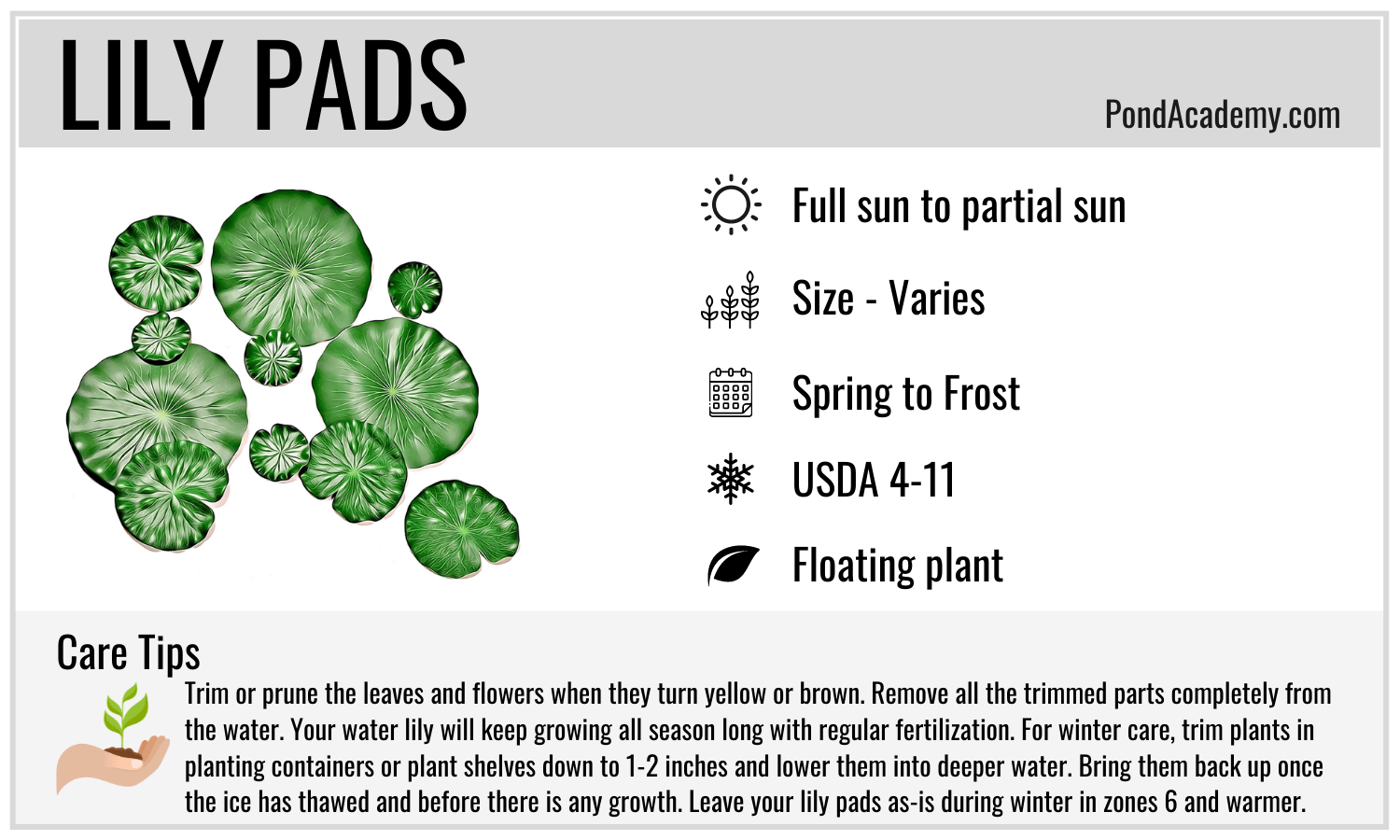
Water Hyacinth (Eichhornia crassipes)
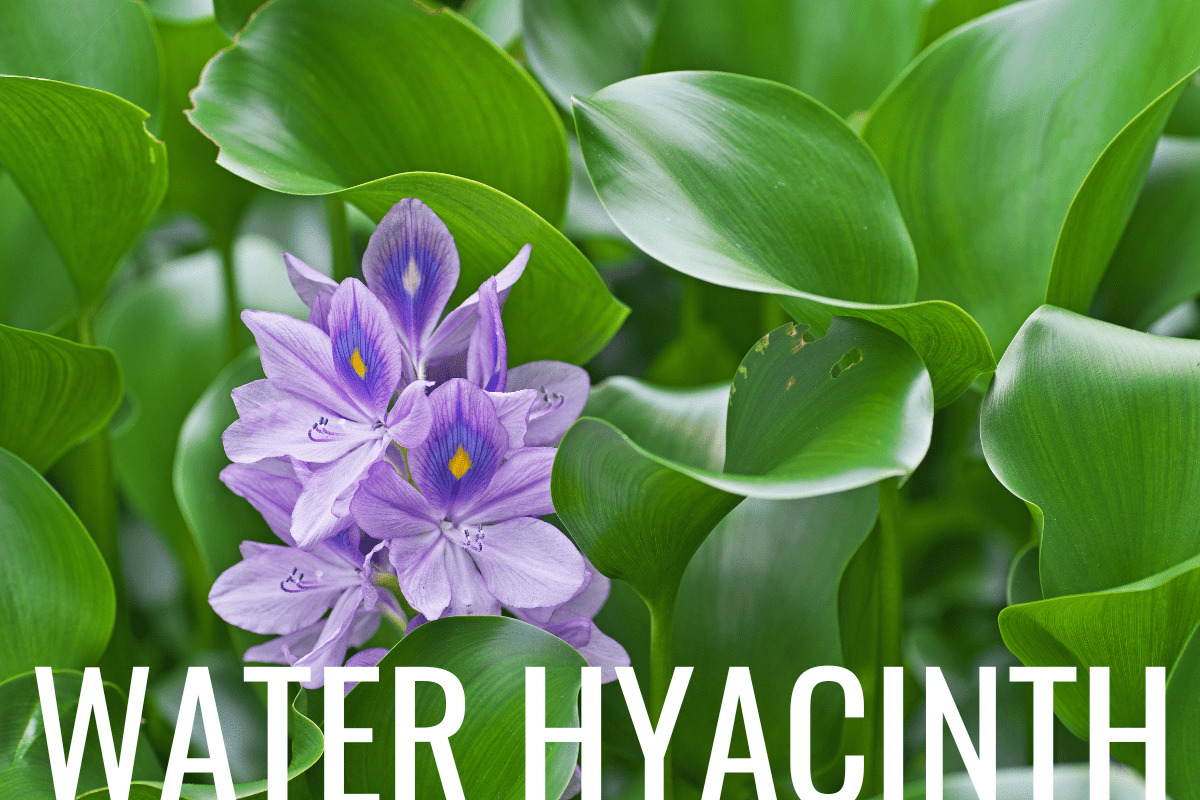
Water Hyacinth is one of the most popular floating pond plants due to its beautiful Summer blooms and ability to consume excess nutrients, which helps control algae.
They also help naturally add oxygen to your pond water and provide cover for your fish from predators.
While this plant has many benefits, it is considered invasive in many areas outside of its native range and is even considered illegal in certain many Southern states and as far North as Wisconsin. This is due to the extremely rapid growth of this plant and its ability to block waterways, choke out native species of plants, etc.
Important: Check with local regulations on the legality of this plant before adding it to your pond.
![]() Water Hyacinth Quick Facts
Water Hyacinth Quick Facts
This floating pond plant should be planted in an area that receives full sun to partial shade. It is hardy in USDA Zones 9-11. The Water Hyacinth plant can grow up to 36 inches and typically blooms July through September with lavendar or pink flowers.
Water Hyacinth Planting Tips
- Scatter the plants across the surface of the pond.
- For best results, place in areas that get full sun.
- Scatter the plants in a floating ring to contain them and prevent overpopulation.
Check out our full guide on how to plant water hyacinth in a pond, properly care for it, and much more!
Water Hyacinth Plant Care Card
Click the Water Hyacinth care card below and save the PDF to your computer or phone. Print the 3x5 card or access it right from your mobile device - anytime, anywhere. It's 100% free!

Water Lettuce (Pistia Stratiotes)
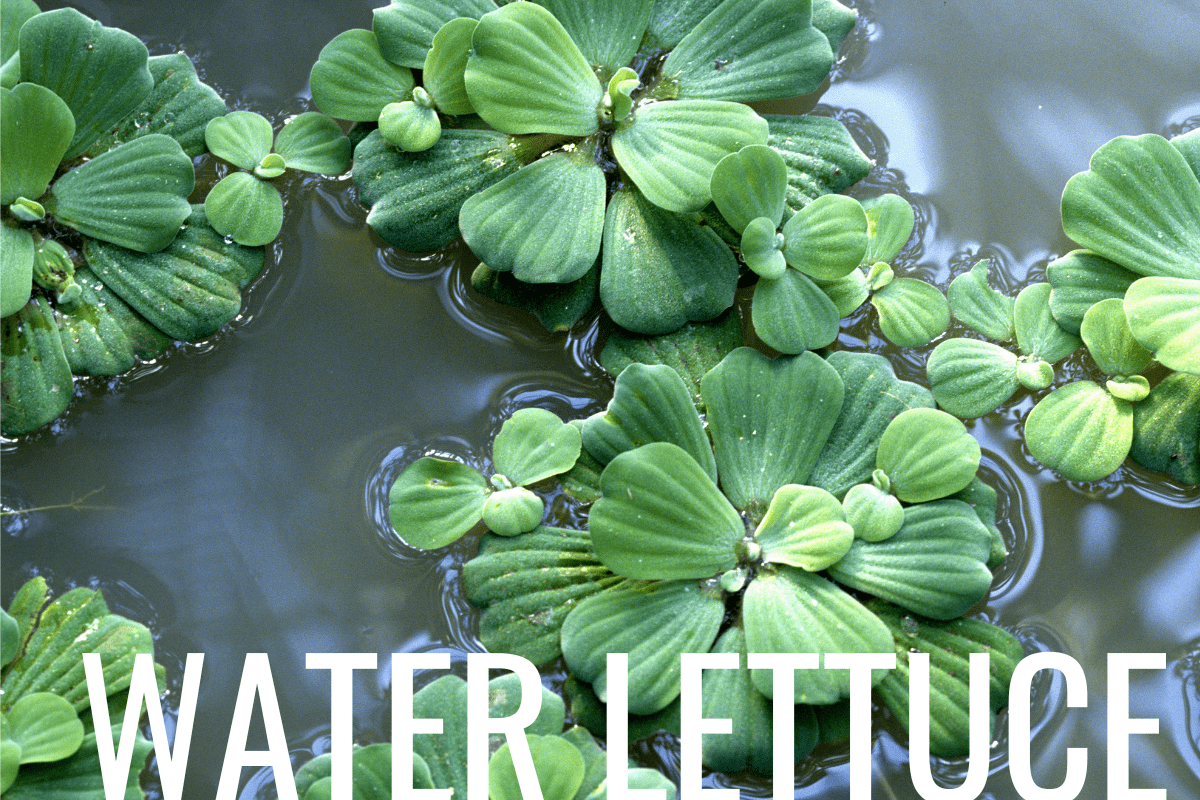
Water Lettuce is often mistaken for a floating head of cabbage. This is understandable as both are similar in appearance and float on the water’s surface. It features ribbed and velvety foliage, usually in light green to lime-green color.
Water Lettuce can be found almost everywhere – marshes, lakes, bogs – across all continents except Antarctica.
Pond and water garden owners prefer Water Lettuce because it helps keeps the water clean by preventing algae growth. It also absorbs heavy metal toxins, including cadmium and zinc, from water.
That said, it is important to note that Water Lettuce can become quite intrusive due to its vigorous growth, especially in the Southern states.
![]() Water Lettuce Quick Facts
Water Lettuce Quick Facts
This floating pond plant should be planted in an area that receives partial to full shade. It is hardy in USDA Zones 9-11. The Water Lettuce plant can grow up to a 12 inch spread and typically blooms late Summer to early Fall with white or yellow flowers.
Water Lettuce Planting Tips
- After buying your Water Lettuce in small groups or by the head, detach all yellow leaves in preparation for planting. The best time to plant is during late April when the last frost of the season has gone. To plant, spread the lettuce across your pond and ensure minimal movement.
- Tip: Tie a fishing line around the bunch of water lettuce you placed in the pond to help keep them immobilized.
- Despite being a tropical plant, Water Lettuce thrives most when summer is just starting, with the temperatures still around 60 degrees Fahrenheit (15 Celsius).
- For best results, install a partial shade for your Water Lettuce during midday. This protects them against peak mid-day temperatures, especially in hot climates.
Check out our full guide on how to plant water lettuce in a pond, properly care for it, and much more!
Water Lettuce Plant Care Card
Click the Water Lettuce care card below and save the PDF to your computer or phone. Print the 3x5 card or access it right from your mobile device - anytime, anywhere. It's 100% free!
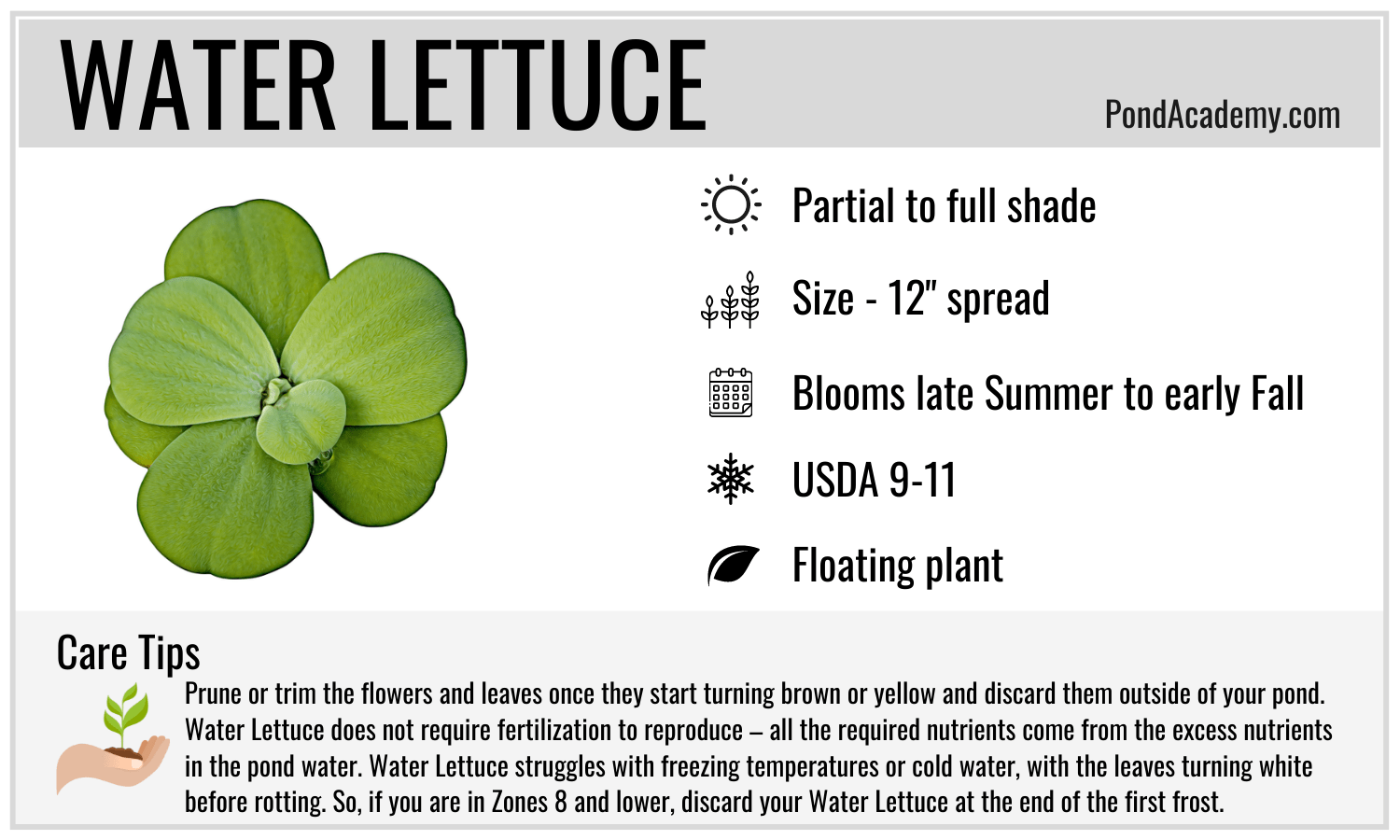
Additional Information
How to Plant Floating Plants in a Pond
How you plant floating plants in a pond will depend on the species. For example, planting Frogbit, Water lettuce, and Water Hyacinths can be as easy as scattering them across the water's surface. On the other hand, Lily pads and Floating Heart are best planted in pots submerged under water.
What to do With Floating Pond Plants in the Winter
What you do with floating pond plants will depend on the hardiness of the species. Some plants, like Water Hyacinth and Water lettuce, will not overwinter, so you can discard them and replant them in Spring. Lily Pads and Floating Hearts can be trimmed and lowered into deeper water over winter.
Do Floating Pond Plants Need Soil?
While many floating pond plants have floating roots that pull nutrients from the water and do not require soil, some floating plants, like lily Pads and Floating Hearts, should be planted in a loamy soil.
Do Floating Plants Need Still Water?
Floating plants will do fine with any type of water movement your pond will offer, from complete stillness to a little movement from a waterfall or fountain.
Fish and Floating Plants
Most popular pond fish like koi and goldfish will eat floating plants, depending on the type of plant. This can be beneficial if you have fast-growing plants, as your fish will help keep them in check. But, if you don’t want your fish to eat your plants, you can plant them in pots on planting shelves where the fish have trouble accessing or use a net-style plant protector.





